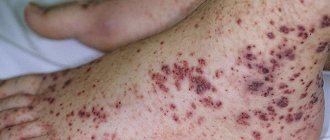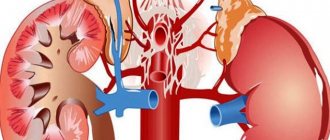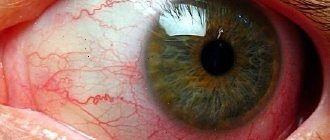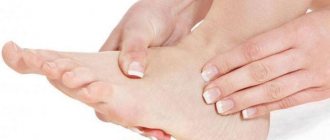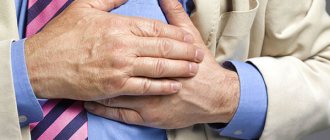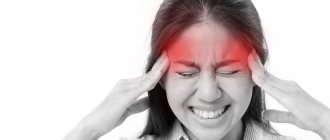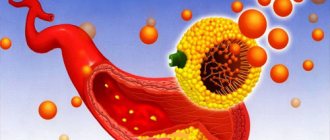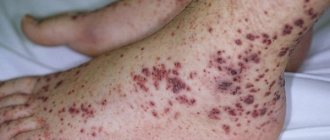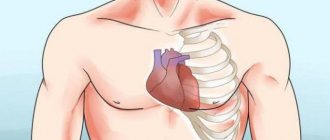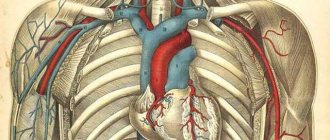Vessels are
The vascular system is responsible for transporting nutrients to human organs - oxygen, oxygen dioxide, white blood cells, platelets, trace elements and minerals that enter the body from food. Vessels are located throughout the body - in the limbs, head and abdominal cavity.
Arteries are responsible for transporting nutrients, and therefore are least susceptible to disease. The veins suffer the most in the body - they are the ones who have to carry harmful elements throughout the body.
The longer the circulatory system moves away from the heart, the smaller the arteries and veins become. Ultimately, they approach cells in the form of capillaries. They are responsible for removing harmful products and feeding nutrients.
In the area of the kidneys, the capillary system takes the form of glomeruli, so almost all unnecessary elements are excreted through the urinary system. With the development of pathologies, it is the peripheral vessels that are primarily affected, which leads to tissue dysfunction.
Prevention
Before talking about the prevention of circulatory disorders, it is worth noting that when a person has a hereditary predisposition, even compliance with all precautions does not guarantee the absence of pathologies. However, practice has shown that following certain rules can still reduce the risk of disease to a minimum.
You should not stay in a static position for a long time, no matter sitting or standing, you should always alternate and give your legs rest. It is important to ensure that clothing does not compress the blood vessels (tight shoes, tight belt, etc.). For the same reason, it is not recommended to sit cross-legged. Lifting weights and significant physical activity lead to increased pressure in the legs, and this is the first reason for the appearance of varicose veins.
You should give up bad habits (smoking, alcohol). Those who like to eat heavily, especially at night, should reconsider their views towards a healthy diet. Participating in heavy sports for patients with vascular problems is contraindicated, but athletics, swimming, short jogging and walking will only have a positive effect and are therefore highly desirable.
If you want to stay healthy, give up bad habits
Important. Try to move more as this activates blood circulation in the organs of the lower limbs, which reduces congestion in the vessels of the legs.
To improve your condition, we suggest devoting a few minutes every day to special therapeutic exercises, which can also be performed at work. It will help activate blood movement through the veins and arteries, which will improve nutrition and gas exchange in cells:
- standing (several minutes) move the weight from one leg to the other;
- roll from toes to heels and vice versa approximately 30 times;
- Walk on your toes, on your heels, on the inside and back of your feet for a minute;
- extend your leg and straighten your toes as much as possible, hold the position for 30 seconds, rest and repeat again;
- sitting or lying down, raise and lower your pelvis 15 times, try to do this with the help of your hips, leaning only on your toes and elbows.
In truth, any type of therapeutic exercise that involves the legs will be an effective preventive measure in the fight against vascular diseases of the lower extremities.
Symptoms of vascular diseases
Symptoms of vascular diseases can vary depending on the cause of their occurrence. In the first stages of development of the pathology, symptoms do not appear, and therefore it can be difficult to detect the disease. It is detected only during routine medical examinations.
The main symptoms of vascular disease include:
- Dry cough that occurs when lying down. This symptom cannot be relieved with expectorants.
- General weakness of the patient and pallor of the skin.
- Hyperthermia appears if the pathology occurs due to the development of an inflammatory process.
- Increased blood pressure for no apparent reason.
- Edema.
- Dyspnea usually characterizes angina pectoris.
- Nausea and vomiting.
- Pain similar to osteochondrosis.
- Chest pain accompanied by burning and squeezing.
Peculiarities
Vascular diseases are divided into 2 groups according to the location of the source of the disease. In case of diseases of the central vessels, circulatory disturbances are observed in the aortas and coronary arteries of the head, neck, and spinal cord.
Difficulties also appear in the peripheral vessels, covering the legs, arms and abdominal area. In diseases, the lumen of the veins expands or narrows, there is poor patency, spasms, pain, and nerve fibers are blocked. Symptoms of vascular diseases in the neck and other areas differ.
Causes of development of vascular pathology
The main causes of pathologies of the vascular system are:
- Inflammatory processes.
- Developmental defects.
- Atherosclerotic plaques.
- Reduced strength of vascular walls.
- Allergic reactions.
- Autoimmune pathologies.
- Thrombosis.
- Violation of vascular tone.
The following can also lead to the development of diseases:
- Various blood diseases.
- Impaired heart function.
- Diabetes.
- Increased cholesterol concentration.
- Central nervous system disorder.
- Avitaminosis.
Major vascular diseases
Depending on the location of the lesion, all pathologies can be divided into two groups: diseases of the central vessels and pathologies of the peripheral vessels.
The first diseases cause disturbances in the blood supply to the neck, spinal cord, and head. The second are in the limbs and abdominal cavity.
Atherosclerotic blood vessel disease
Atherosclerotic disease is perhaps the most dangerous pathology of the vascular system, since it affects large arteries. The main reason for its development is the accumulation of bad cholesterol, which is present in excess in people who are addicted to junk food.
The onset of the disease can be triggered by genetic predisposition, obesity, bad habits, diabetes mellitus, high blood pressure and thyroid pathologies.
Atherosclerotic disease is characterized by the following symptoms:
- If cholesterol accumulates on the walls of the heart vessels, the disease is accompanied by pain in the area of the left side of the chest, radiating to the arm. Painful sensations intensify when inhaling and are accompanied by chills and weakness.
- With atherosclerosis of the aorta, the patient is concerned about high blood pressure, dizziness, and a burning sensation in the chest.
- When cholesterol accumulates in the vessels of the abdominal cavity, the patient is concerned about increased gas formation, pain in the abdominal area, diarrhea and kidney dysfunction.
- With atherosclerosis of the lower extremities, a distinct venous pattern appears. The disease is accompanied by numbness and pain in the legs.
- Cerebral atherosclerosis affects the blood vessels of the brain. Accompanied by tinnitus. dizziness, shortness of breath, fatigue, deterioration of mental abilities.
Cardiac ischemia
The disease develops due to a constant lack of blood in the veins that supply the myocardium. Its causes are excessive physical activity, psycho-emotional instability, constant overwork, and imbalance of carbohydrate-fat balance.
Manifestations of coronary heart disease:
- Painful sensations in the chest, left arm and jaw. First they occur after excessive physical exertion, and then at rest.
- Dyspnea.
- Rapid pulse.
Reference! The acute form of coronary artery disease leads to a heart attack, which is accompanied by cutting pain, suffocation and pulmonary edema.
Strokes
With insufficient blood supply to brain cells, the gradual death of nerve endings begins, which leads to organ dysfunction. The cause of the disease is long-term oxygen starvation of tissues. An ischemic stroke occurs due to the accumulation of a cholesterol plaque or blood clot, while a hemorrhagic stroke occurs due to the rupture of a vessel and the formation of a hematoma in the area of the organ.
Strokes are characterized by:
- Numbness of the nerve endings in one half of the torso or body.
- Throbbing pain in the head.
- Double vision.
- Nausea and vomiting.
- Deterioration of coordination.
If these symptoms occur, you must quickly call an ambulance, since medical assistance must be provided no later than four hours from their onset.
Hypertension
The diagnosis is confirmed with a persistent increase to 140/90 mm Hg. Art. The disease develops from obesity, imbalance of lipids in the blood, excessive salt intake, insomnia, and frequent stress.
Symptoms of heart and vascular disease include:
- throbbing headache in the back of the head and temples;
- noise in ears;
- the appearance of dark spots before the eyes;
- dizziness;
- shortness of breath, swelling of the extremities;
- nausea, vomiting.
If there is no appropriate treatment, hypertension leads to atherosclerosis, stroke, heart attack, and cerebral hemorrhage. Symptoms of cerebrovascular disease begin to appear at age 45.
Which doctor should I contact?
Since the circulatory system is one of the most complex mechanisms in the body, various specialists are involved in the treatment of its pathologies.
Vascular diseases are treated by:
- Neurologist. His help is required when the pathology has affected the vessels located in the human brain.
- Phlebologist - treatment of varicose veins, thrombophlebitis and inflammation of the venous walls.
- A cardiologist deals with the treatment of cardiovascular diseases.
- Angiologist - pathologies of arteries and lymphatic system.
- An immunologist treats vasculitis and lupus erythematosus, which lead to damage to the vascular system.
- Individual cases may be handled by a dermatologist, allergist and surgeon.
A common pathology in a newborn baby is hemangioma - a red, convex spot that appears due to the proliferation of blood vessels. The disease itself is not dangerous, but it negatively affects the baby’s immune system. Therefore, the situation requires consultation with an oncologist or surgeon.
Reference! Vascular diseases are never an independent pathology - they arise against the background of other disorders in the functionality of the body.
Types, forms, classification
Vasculitis has a huge number of types, forms, subtypes and classifications.
Some forms and types of the disease affect exclusively the skin. Others affect vital organs and cause significant harm to the entire body, in extreme cases leading to death.
According to the causes of occurrence, vasculitis is divided into:
- Primary. They are a consequence of inflammation of the walls of the blood vessels themselves. They arise independently and are in no way associated with other pathologies.
- Secondary . They represent the reaction of the vessels themselves to other diseases occurring in the body. Secondary vasculitis is inflammation that occurs against the background of viral or infectious diseases, oncology, or taking certain medications.
Let us consider below the classification of vasculitis (CHCC nomenclature) depending on the location of the disease.
Vasculitis of large vessels . We are talking about the following diseases:
- Takayasu arteritis. A pathology of an autoimmune nature, in which the walls of the aorta and its branches are affected by a pronounced inflammatory process. Women suffer from Takayasu's arteritis much more often than men - in a ratio of 8:1.
- Giant cell arteritis. Another pathology of an autoimmune nature, which also affects the aorta and its branches and often occurs against the background of rheumatism. The most common reason for the development of this type of vasculitis is infection of the patient with herpes or hepatitis viruses.
Vasculitis of medium vessels:
- Kawasaki disease. A disease that occurs in an acute febrile form and most often affects children. The inflammatory process in this type of pathology involves not only large, but also medium-sized vessels - veins and arteries.
- Periarteritis nodosa. An ailment during which inflammation of the walls of small and medium-sized vessels occurs, which provokes more serious diseases and pathologies - myocardial infarction, thrombosis, etc. The most common “culprits” of the pathology are the hepatitis virus, as well as individual intolerance to certain medications.
Small vessel vasculitis . ANCA-associated vasculitis is in turn divided into:
- Granulomatosis with polyangiitis. A severe autoimmune disease that tends to progress rapidly. Affects capillaries, venules, arterioles. Quite often the lungs, organs of vision, and kidneys are involved in the pathological process.
- Microscopic polyangiitis. A pathology poorly studied by modern medicine. With inflammation of small vessels of this nature, several vital organs are affected at once - most often the kidneys and lungs.
- Eosinophilic granulomatosis with polyangiitis. A disease that occurs when there is an excess amount of eosinophils in the blood, an excess of which leads to the development of severe inflammation in small and medium-sized vessels. In most cases, this disease affects the respiratory organs and kidneys, and the patient suffers from severe shortness of breath, severe runny nose or bronchial asthma.
- Immune complex small vessel vasculitides: immunoglobulin A associated vasculitis, cryoglobulinemic vasculitis, anti-GBM disease.
In addition, official medicine identifies vasculitis, which can simultaneously affect large, medium and small vessels. We are talking about diseases such as:
- Behçet's disease. The pathology manifests itself by the frequent appearance of ulcers on the surface of the mucous membranes (in the mouth, in the genital area, on the gastric mucosa, etc.).
- Cogan's syndrome.
In some situations, the disease affects specific organs (vasculitis of individual organs). When 2 or 3 organs are affected simultaneously, doctors diagnose “systemic vasculitis.”
Diagnosis of vascular pathologies
The list of diagnostic measures includes history taking, palpation, percussion and auscultation. Based on the data received, the doctor makes a primary diagnosis and, if necessary, prescribes additional studies.
The main methods of diagnostic measures include:
- Clinical blood test. It will show the presence of an inflammatory process in the body.
- General urine analysis. An elevated lactate dehydrogenase level may indicate coronary artery disease.
- Biochemistry of blood. Required to detect cholesterol levels.
- Immunological test. Necessary for determining lipoproteins in the blood.
- Coagulogram. Allows you to determine how the process of blood clotting occurs in the patient’s body.
- Angiography of blood vessels. Indicates lesions in blood vessels.
- Ultrasonography. It will show the presence of vascular plaques and their location.
- Magnetic resonance imaging. It will indicate various anomalies in the vessels and the degree of their narrowing.
- RVG will indicate blood circulation and tone in the limbs.
- A rheoencephalogram is necessary to check the response of the vascular system.
Symptoms and diagnosis
The severity of signs of peripheral vascular disease depends on the degree of disruption of blood flow in them.
The most common symptom is the presence of pain in the problem area. Muscle tissues in the area of the buttocks, thighs, and legs are often affected. Uncomfortable sensations appear during increased physical activity and walking, which force the patient to interrupt activity or movement.
Other symptoms of peripheral vascular disease include:
- increased dry skin on the lower extremities;
- weakness in the legs;
- the presence of a feeling of numbness and tingling in them;
- the presence of areas of the dermis with missing hair;
- increased fatigue;
- pale or bluish skin tone on the legs;
- the appearance of edema;
- convulsions;
- atrophic changes in the muscles of the lower extremities.
If you have several of the listed signs, you should definitely consult a specialist.
At the initial visit, a visual examination is performed and an anamnesis is collected. The doctor pays attention to the structure and color of the skin, palpates problem areas, measures blood pressure, and identifies diseases that preceded the development of vascular pathology.
Instrumental diagnostics are prescribed, which involves:
- ultrasound examination identifying the affected areas of the arteries;
- electrocardiogram;
- angiography showing where the blood vessels are narrowing;
- Ultrasound and Doppler analysis of arteries in the cervical region;
- establishing blood pressure data in the lower extremities and comparing them with values in the arms.
A general blood test and blood test for cholesterol and glucose levels are prescribed.
Treatment of vascular diseases
Drug treatment is used to improve blood circulation, clear it of plaques and increase the lumen in damaged capillaries. After diagnosis and diagnosis, the patient is prescribed drug therapy, which must be supported by a special diet.
Medications
For vascular damage, the following types of medications are used:
- Neurotropic substances. Necessary for normalizing blood flow and reducing the tone of the vascular system. Such drugs include Nitroglycerin, Eufillin and Reserpine.
- Calcium channel blockers. Used to strengthen vascular walls. Blockers are Nifedipine, Verapamil, Diazepam and Amlodipine.
- Heart medications are needed to correct the lack of oxygen in the brain. These include Cardiovalen and Adoniside.
- Enduracin is a medicine based on nicotinic acid. Used to improve the functioning of the vascular system.
- Herbal preparations like Cavinton and Bilobil are used to eliminate vascular spasms.
- To strengthen the vascular walls, Ascorutin, Venoton or Detralex are prescribed.
- Nootropic substances have a beneficial effect on the patient’s mental abilities. These include Nootropil and Phenotropil.
- To block spasms during migraine attacks, as well as to have a vasodilating and anti-inflammatory effect, Maxalt is prescribed.
- Anticoagulants are necessary to prevent blood clots from forming. These drugs include Heparin and Hirudin.
- Cavinton or Capillarin are used to cleanse the vascular system.
- ACE inhibitors are used to strengthen vascular walls and reduce blood pressure.
Surgery
More severe cases require surgery. The indication for it is the risk of developing blood clots - blockage of arteries and veins, which can lead to the death of the patient.
For the surgical treatment of vascular pathologies, the following methods can be used:
- Shunting. During the operation, the surgeon uses a shunt to block some sections of the arteries, allowing blood to flow through a different route.
- Stenosis. Artificial dilatation of the walls of blood vessels. This is achieved by installing a supporting frame into the damaged vessel.
- Carotid endarterectomy. The surgeon uses clamps to block the desired section of the artery, then makes an incision on the vessel and removes cholesterol plaques.
The word of traditional medicine
If the patient decides to use non-traditional treatment for diseased veins and blood vessels in the legs, it is important to understand that folk compositions help improve the patient’s condition and temporarily eliminate the symptoms of the disease. But it is imperative to consult a doctor. When treating sore legs, you can use the following folk recipes:
- To cleanse blood vessels, take a lemon-garlic mixture. Grind 4 lemons and 4 heads of garlic, mix, pour the resulting mixture with 2.5 liters of cold boiled water. Leave for 3 days, filter and drink 100 grams in the middle of the day. Treatment lasts six months.
- Fresh coltsfoot leaves help with severe pain and fatigue in the legs. They are used as a bandage. Several sheets are applied to the affected area, wrapped with a bandage or gauze and a kind of compress is left overnight. Coltsfoot can be replaced with white cabbage.
- In case of varicose veins, you can use dandelion root. The fresh root is dried and eaten every day. Horse chestnut tincture gives good results. The fruits (50 grams) are poured with vodka (0.5 liters) and left to infuse for two weeks. Take 30–40 drops per day orally.
- Herbal decoction. Prepared from chamomile flowers, yarrow, immortelle, birch buds - 100 grams of each herb. Take 1 tsp. mixture, pour 500 ml of boiling water, filter after 15 minutes, add honey (2 tablespoons). The resulting liquid is divided equally and drunk before bed and in the morning.
- For severe swelling of the lower extremities, you can use a decoction of four hundred grams of white radish and one liter of water with the addition of a teaspoon of salt. The prepared mixture is boiled for ten minutes, cooled and taken orally throughout the day.
Traditional medicine is recommended to be used in combination with drug treatment and physiotherapeutic procedures. It is important to eliminate not the symptoms, but the causes of such an unpleasant phenomenon as joint pain.
By combining effective medications with medicinal compounds, you can quickly cope with the disease, because legs can hurt in both elderly and young people. In order to avoid the need to resort to long-term treatment, it is worth adhering to measures to prevent vascular diseases - a proper diet, leading an active lifestyle, playing sports, wearing comfortable shoes, and getting the required amount of vitamins. Taking care of your own health should come first, and then the question of why your legs hurt won’t have to be asked at a doctor’s appointment.
Possible complications
Due to the fact that blood vessels supply organs with various nutrients and oxygen, their pathologies can lead to damage to many other systems. But first of all, the heart muscle and brain suffer.
Possible complications:
- Stroke.
- Heart attack.
- Alzheimer's syndrome.
- Aneurysm.
- Encephalopathy.
- Migraine.
- Loss of vision.
- Deterioration of speech ability.
- Deterioration of coordination.
- Paralysis of legs and arms.
- Necrosis.
- Psycho-emotional disorders.
